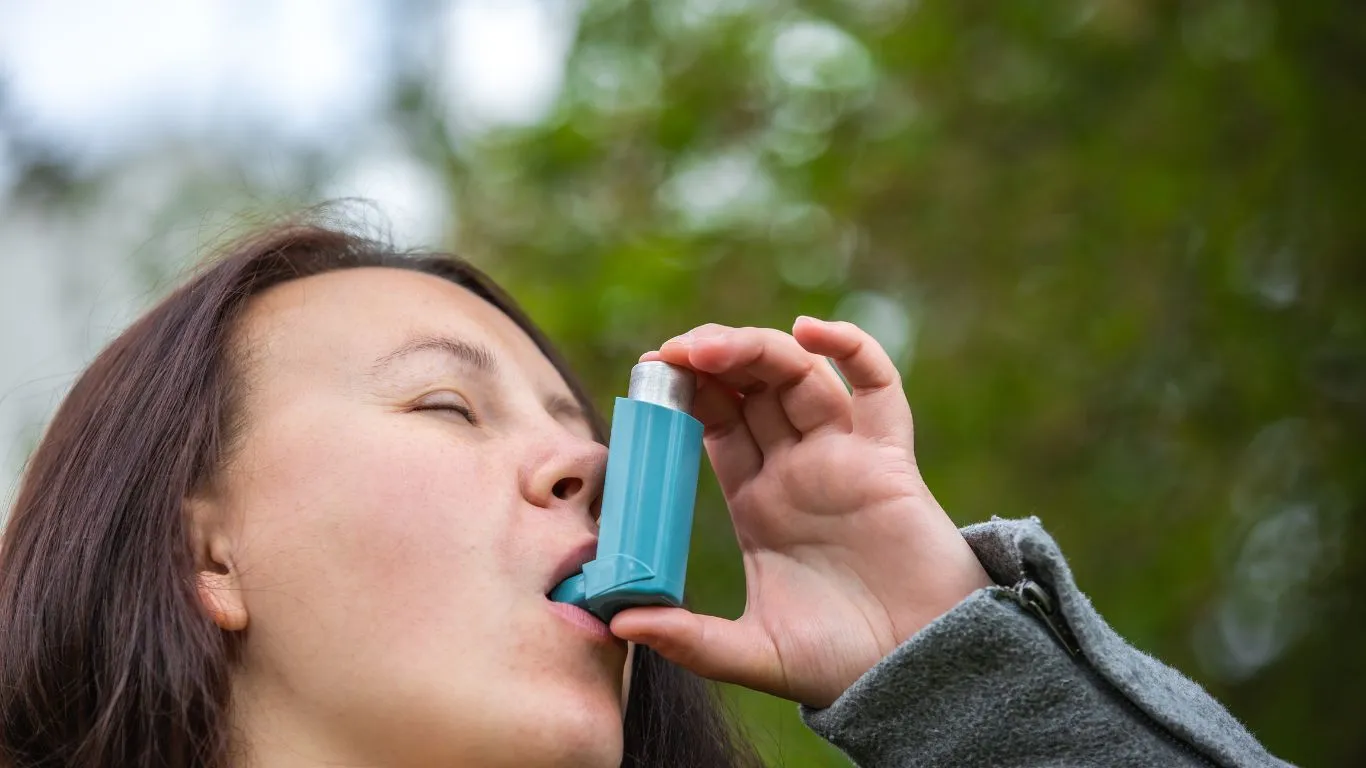How to Stay Active with Asthma: Tips for a Healthier Lifestyle
As a pulmonary nurse practitioner, I’ve seen firsthand how asthma can feel like a huge barrier to living an active life. Trust me, I get it — staying physically active when every breath feels like a struggle isn’t exactly on the top of your to-do list. But here’s the thing: learning how to stay active with asthma isn’t just possible — it’s absolutely crucial for lung health, energy levels, and even emotional wellbeing. And yes, you can do it without triggering symptoms. Let’s talk about how.
Why Physical Activity Matters — Even If You Have Asthma

I can’t tell you how many times I’ve had patients look at me like I’m nuts when I suggest adding more movement to their routine. The assumption is always, “But won’t exercise make my asthma worse?” And the answer is — not if it’s done right. In fact, regular physical activity can strengthen your lungs, reduce inflammation, and improve overall respiratory endurance.
When you avoid movement altogether, your lungs can actually become more sensitive over time, making asthma symptoms more frequent. Staying active helps reverse that trend. So, rather than cutting out exercise, let’s figure out how to do it smarter.
Benefits of Exercise for People with Asthma
- Improved lung capacity: Exercise trains your lungs to work more efficiently.
- Better asthma control: Physical activity can reduce airway inflammation over time.
- Weight management: Extra weight can put more pressure on your lungs and make symptoms worse.
- Stronger immune system: Regular movement helps your body fight off triggers like respiratory infections.
- Mental health boost: Endorphins from exercise help reduce anxiety and stress, both of which can exacerbate asthma symptoms.
How to Stay Active with Asthma Without Overdoing It

This is where strategy comes into play. You don’t have to sign up for a marathon — let’s just focus on sustainable, asthma-friendly ways to keep your body moving. Here are a few things I always recommend to my own patients (and practice myself):
1. Know Your Triggers — and Work Around Them
This one’s big. Everyone with asthma has a unique set of triggers. For some it’s cold air, for others it’s pollen, pet dander, or even strong perfumes at the gym. Before you jump into an exercise routine, make sure you understand what sets off your symptoms. That way, you can plan your workouts in a way that avoids flare-ups.
2. Always Warm Up and Cool Down
Skipping warmups is like hitting the gas without starting the engine — not a great idea. Gentle stretching or walking for 5–10 minutes before and after your workout helps reduce the risk of exercise-induced bronchospasm. Plus, it gives your lungs time to adjust gradually.
3. Keep Your Rescue Inhaler Close (Just in Case)
I always tell my patients: Be proactive, not reactive. Using your rescue inhaler 15 minutes before activity — if advised by your doctor — can help prevent symptoms. But even if you don’t usually need it, always have it nearby just in case. You never want to be caught off guard halfway through a workout.
4. Start Small and Build Up
This one’s personal. After recovering from a nasty winter bronchitis one year, I had to rebuild my stamina from scratch. I started with light walks around my neighborhood and worked up to short hikes and low-impact cardio. Don’t feel like you have to go full beast mode on day one — consistency beats intensity every time.
5. Try Asthma-Friendly Activities
Some forms of exercise are easier on the lungs than others. Great choices include:
- Swimming: The warm, moist air around pools is often less irritating to airways.
- Yoga: Focuses on controlled breathing and low-impact movement.
- Walking: Easy to adjust the pace based on how you’re feeling that day.
- Cycling (indoors or outdoors): Great cardio that you can tailor to your fitness level.
It’s all about finding what works for your body and your lungs. The goal isn’t to become a CrossFit warrior overnight — it’s to build a movement routine that supports your health, not works against it.
Asthma Doesn’t Have to Sideline Your Life

If I’ve learned anything over the years working with patients — and navigating my own respiratory quirks — it’s that staying active with asthma is more about planning and mindset than limitations. When you move your body, you send a message to your lungs that they’re still in the game. And with the right strategies, they’ll get stronger right alongside you.
Tips to Manage Asthma Symptoms During Exercise

From my experience working closely with patients, one thing is crystal clear: managing asthma during physical activity is a skill you can develop. It’s all about listening to your body, preparing ahead, and making small adjustments that pay off big time.
Understand Early Warning Signs
Asthma symptoms don’t always hit you out of nowhere — usually, your body gives subtle clues. Maybe you start coughing a little, feel tightness in your chest, or notice wheezing that wasn’t there before. I always tell people: don’t ignore these signals. Catching symptoms early means you can pause, take a break, or use your inhaler before things escalate.
Keep a Symptom Diary
Here’s a personal tip that’s helped me and many patients: keep a simple log of your activity and how you felt before, during, and after. Over time, patterns emerge — like certain environments or activities that trigger symptoms more than others. This awareness can be a game changer in tailoring your exercise plan.
Adjust Intensity and Duration
Not every workout has to be a high-intensity sweat fest. On days when your asthma feels a little out of control, scale back. Instead of pushing through a 30-minute jog, try a gentle 10- or 15-minute walk. Think of it as giving your lungs a little breathing room, literally. Gradually building up intensity, based on how you feel, helps your lungs get stronger without being overwhelmed.
Optimize Your Environment
Environment plays a massive role in how well you tolerate exercise with asthma. Cold, dry air is often a culprit for flare-ups, so I usually recommend exercising indoors during winter months or using a scarf to cover your mouth and nose outside. On high pollen or pollution days, try to avoid outdoor workouts and opt for indoor activities instead. This simple tweak has saved many patients from unexpected asthma attacks.
Creating an Asthma-Friendly Fitness Routine

One of the best parts of my job is helping people build fitness routines that fit their lifestyle and asthma needs. It’s definitely not one-size-fits-all — the key is personalization and flexibility. Here’s a basic blueprint that I often recommend, which you can tweak to your preferences:
Start With Low-Impact Cardio
Think walking, swimming, or cycling at a relaxed pace. These activities are less likely to irritate your airways but still get your heart pumping and lungs working.
Incorporate Breathing Exercises
Breathing techniques like pursed-lip breathing or diaphragmatic breathing are more than just relaxation tools — they actually improve your lung function. I personally use these during and after workouts to help calm my respiratory system and reduce the chance of a flare-up.
Include Strength Training
Building muscle strength supports better posture and breathing mechanics. Bodyweight exercises or light weights can be a great addition. Just be sure to pace yourself and breathe steadily during lifting.
Don’t Forget Flexibility and Balance
Yoga and stretching improve flexibility and can help ease any tightness around your chest or shoulders — common trouble spots for people with asthma. Plus, these activities help reduce stress, which is a sneaky trigger for many.
Practical Advice From My Own Journey

When I first started learning how to stay active with asthma, it felt like a puzzle I couldn’t quite solve. After some trial and error, here’s what really helped me—and what I pass on to patients every day:
- Be patient with yourself: There will be good days and challenging ones. Celebrate every small victory.
- Build a support system: Whether it’s friends, family, or a fitness coach who understands asthma, having encouragement makes a huge difference.
- Stay consistent: Even light activity several times a week helps keep your lungs conditioned and symptoms in check.
- Communicate with your healthcare team: Regular check-ins allow you to adjust medications or strategies as needed.
And here’s a little secret—sometimes, it’s the mindset shift that matters most. Seeing asthma not as a limit but as a challenge to be managed changes everything. That attitude fuels motivation, resilience, and progress.
Overcoming Common Challenges When Staying Active with Asthma

Let’s be honest — staying active with asthma isn’t always smooth sailing. Over the years, I’ve seen patients (and experienced myself) how obstacles pop up unexpectedly. But here’s the thing: most challenges can be tackled with the right mindset and a bit of preparation.
Dealing With Exercise-Induced Asthma (EIA)
Exercise-induced asthma, or EIA, is a term you might hear thrown around a lot. Essentially, it means that physical exertion can trigger asthma symptoms. For some, it’s mild; for others, more severe. If this sounds familiar, you’re definitely not alone.
In my clinical practice, I always emphasize the importance of pre-treatment with inhalers when recommended by a doctor, and carefully pacing yourself. It’s also helpful to choose exercises that are less likely to cause sudden breathlessness, like swimming or yoga.
Managing Anxiety Around Breathing
Here’s a personal insight: asthma doesn’t just affect your lungs — it can mess with your headspace too. Feeling breathless can spark anxiety, which ironically makes breathing even harder. I encourage people to practice mindfulness and controlled breathing exercises. These techniques help keep anxiety at bay, making physical activity more enjoyable and less scary.
Handling Flare-Ups Without Giving Up
We all hit rough patches. Maybe you catch a cold, or the weather turns bad, and suddenly your asthma is flaring. It’s tempting to just throw in the towel and skip workouts altogether. But I recommend adjusting, not quitting.
For example, on bad days, focus on gentle stretching, breathing exercises, or even meditation. This keeps you connected to your fitness routine without overwhelming your lungs.
Asthma-Friendly Lifestyle Tips to Boost Your Activity Levels

Beyond exercise, your everyday habits have a huge impact on how easy it is to stay active with asthma. Here are some lifestyle tweaks that I’ve found really empower my patients and myself:
Prioritize Good Sleep
Sleep is a powerful tool in asthma management. Poor sleep can make your airways more reactive and reduce your energy levels. Aim for 7–9 hours of restful sleep and create a calm bedtime routine that minimizes allergens in your bedroom.
Maintain a Balanced Diet
Eating nutrient-rich foods supports your immune system and lung health. I always encourage a diet rich in fruits, veggies, lean proteins, and omega-3 fatty acids. Avoiding excessive processed foods can help keep inflammation at bay.
Stay Hydrated
Water does wonders for your airways, keeping mucus thin and easier to clear. Especially on active days, make sure you’re sipping enough fluids to stay hydrated.
Quit Smoking and Avoid Secondhand Smoke
This one goes without saying but is often overlooked. Smoke irritates your lungs and worsens asthma symptoms dramatically. If you’re struggling with quitting, don’t hesitate to seek help — it’s one of the best steps you can take for your lungs and fitness.
Keep Up With Regular Medical Care
Regular check-ins with your healthcare provider ensure your asthma plan is up to date. Sometimes, adjusting medication or trying new treatments can make a huge difference in your ability to stay active.
My Final Thoughts on How to Stay Active with Asthma
As someone who’s been both a healthcare professional and someone managing respiratory challenges, I want to leave you with this: your asthma doesn’t define your limits — it informs them. With patience, knowledge, and the right approach, you can build an active, vibrant life without fear holding you back.
Remember, every step forward counts — whether it’s a few extra minutes walking or mastering a new breathing technique. Your lungs are adaptable, and so are you.
References
Disclaimer
This article is intended for informational purposes only and does not substitute professional medical advice, diagnosis, or treatment. Always consult your healthcare provider before starting or changing any exercise program or asthma management plan.

Bianca Nala is a compassionate Nurse Practitioner with a strong background in primary and respiratory care. As a health writer for Healthusias.com, she combines her clinical expertise with a talent for clear, relatable storytelling to help readers better understand their health. Bianca focuses on topics like asthma, COPD, chronic cough, and overall lung health, aiming to simplify complex medical topics without losing accuracy. Whether she’s treating patients or writing articles, Bianca is driven by a single goal: making quality healthcare knowledge accessible to everyone.





